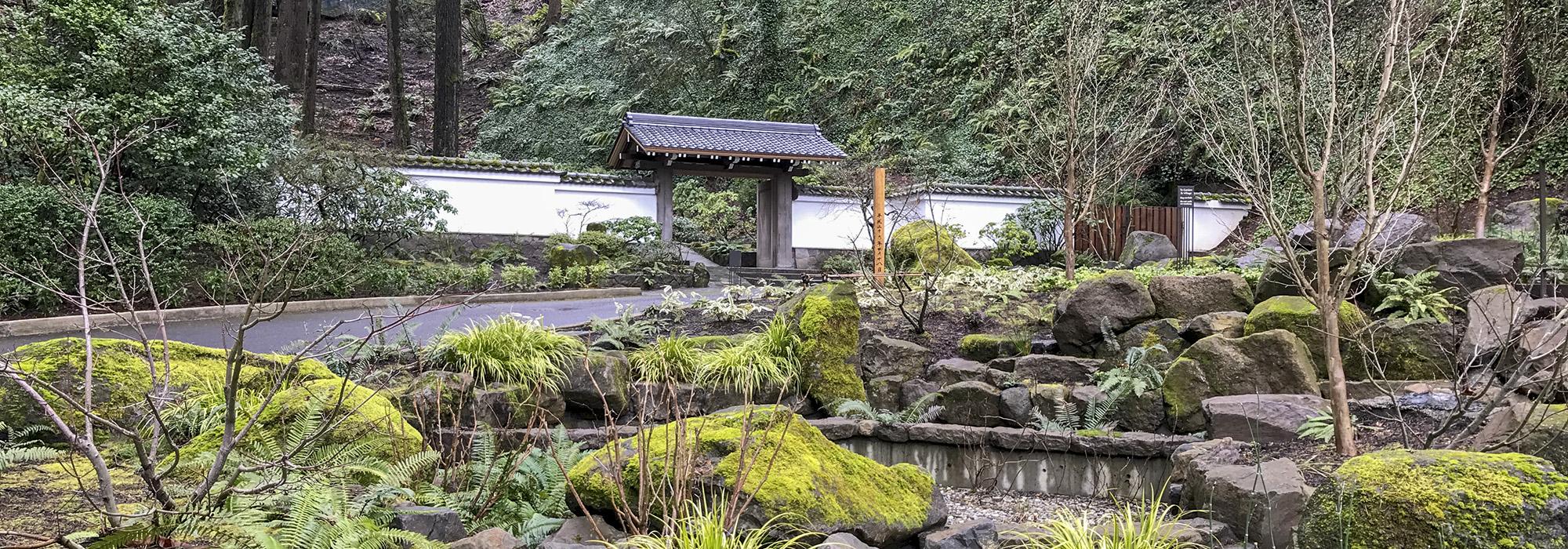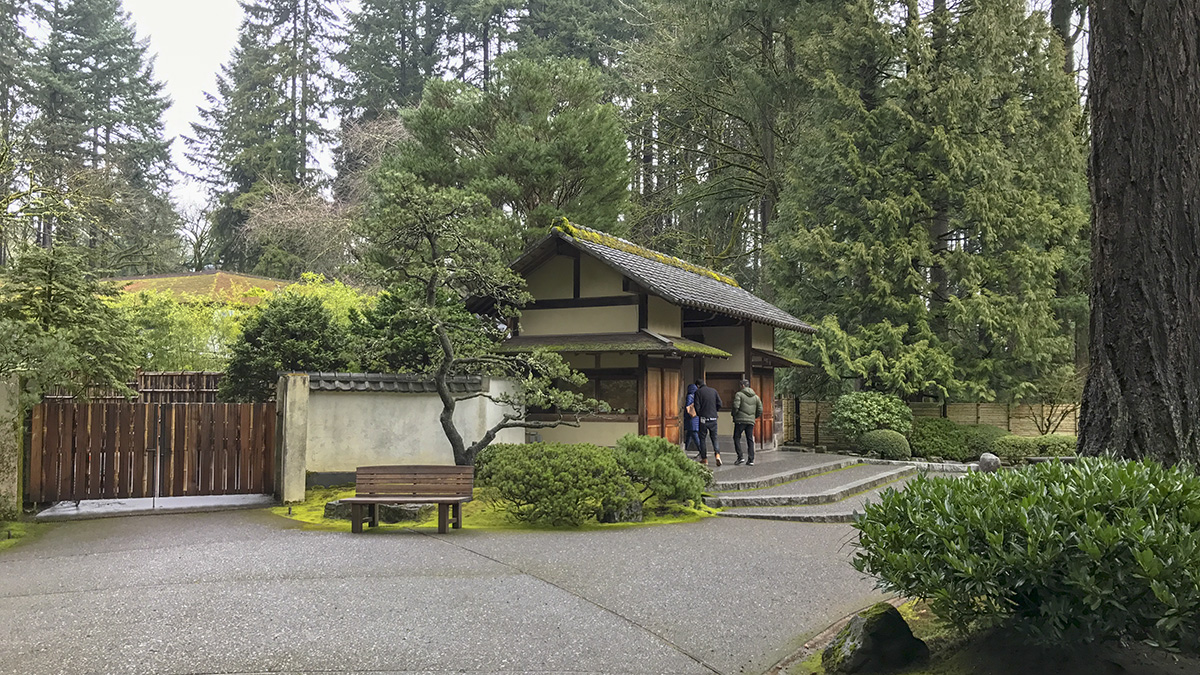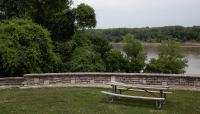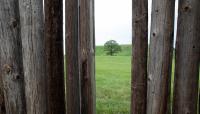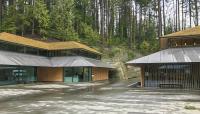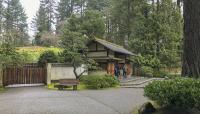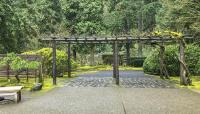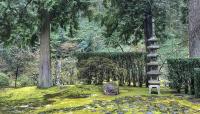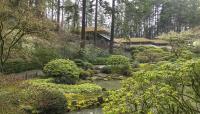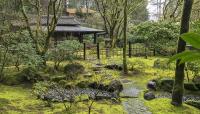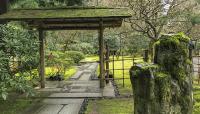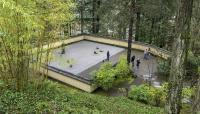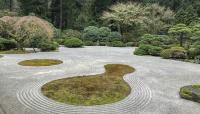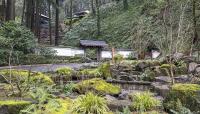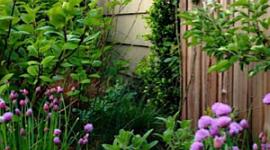Overlooking Portland from the West Hills of Washington Park, this twelve-acre botanical garden was conceived in 1963 as an expression of cross-cultural understanding between Japan and the United States. Between 1961 and 1967, Professor Takuma Tono of Tokyo Agricultural University designed the original 5.5-acre garden on the site of the former Washington Park Zoo. His master plan included five different garden styles that reflected historical approaches in Japanese garden design. Since its conception, the garden has undergone a series of expansions, including the addition of a 3.4-acre cultural village in 2017.
A network of shaded, aggregate trails interspersed with stone staircases connects eight distinct garden spaces, including the Strolling Pond Garden with two levels of ponds and a zig-zag bridge, the contemplative Sand and Stone Garden, and the rustic Tea Garden. Each landscape incorporates the essential Japanese garden components of stone, water, and plant materials to create idealized images of nature. Prominent features include a Koi pond, an imported Japanese teahouse, and a 50-foot-tall waterfall that feeds the Strolling Pond Garden. A central pavilion with traditional shoji paper panels overlooks the Flat Garden, a kare-san-sui (Zen garden) framed by dense, seasonal foliage. Designed by architect Kengo Kuma and garden curator Sadafumi Uchiyama, the cultural village contains a central stone courtyard, a small urban garden, the Bonsai Terrace, and the Chabana Garden, the only garden in North America dedicated to growing Japanese wildflowers for use in tea ceremonies. Intended as a modern interpretation of a traditional Japanese gated village, the series of single-story, wood-frame structures with two-tiered roofs house a library, learning center, gallery, and a garden house bordered by a replica medieval castle wall.



